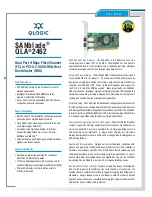
150
Chapter 9 Reset
8.Reset Operation Modes
8. Reset Operation Modes
The following two different modes can be used for an operation reset (RST):
• Normal (asynchronous) reset mode
• Synchronous reset mode
Which mode to use is specified by the synchronous reset operation enable bit (TBCR.SYNCR).
Pin input resets and watchdog resets always use normal reset mode.
For software resets, either normal reset mode or synchronous reset mode can be selected.
8.1 Normal (Asynchronous) Reset Mode
Normal reset operation refers to the mode when the device goes to the operation reset (RST) state
immediately after an operation reset (RST) request occurs.
For a normal reset, the device changes to the reset (RST) state immediately after a reset (RST)
request is received regardless of the current state of internal bus access.
In normal reset mode, the result on any bus operation that is in progress at the time the device
changes state is not guaranteed. However, acceptance of the operation reset (RST) request is
guaranteed.
Setting the synchronous reset operation enable bit (TBCR.SYNCR) to “0” specifies normal reset
mode.
Normal reset mode is the default setting after a settings initialization reset (INIT).
8.2 Synchronous Reset Operation
Synchronous reset operation refers to the mode when the device does not go to the operation reset
(RST) state after a operation reset (RST) request until after all bus access has halted.
In synchronous reset mode, the device does not go to the reset (RST) state when a reset (RST)
request is received if internal bus access is still in progress.
When such a reset request is received, a sleep request is issued to the internal bus. The device
does not change to the operation reset (RST) state until all buses have shutdown operation and
changed to sleep mode.
In synchronous reset mode, the results of bus operations are guaranteed because the device does
not change state until all bus access has halted.
However, if bus access should not halt for some reason, no requests can be received while bus
operation continues. In such a case, the settings initialization reset (INIT) remains available at any
time.
The following lists cases in which bus access may not stop:
If bus wait is enabled due to continuous input of RDY (ready request) to the external expansion bus
interface.
Summary of Contents for FR Family FR60 Lite
Page 2: ...FUJITSU LIMITED ...
Page 3: ...FR60 32 BIT MICROCONTROLLER MB91460 Series User s Manual ...
Page 15: ...xi ...
Page 16: ...xii ...
Page 38: ...22 Chapter 2 MB91460 Rev A Rev B Overview 4 Block Diagram ...
Page 128: ...112 Chapter 4 CPU Architecture 9 Addressing ...
Page 153: ...137 Chapter 8 Device State Transition 3 State Transition Diagram ...
Page 154: ...138 Chapter 8 Device State Transition 3 State Transition Diagram ...
Page 169: ...153 Chapter 9 Reset 10 Caution ...
Page 170: ...154 Chapter 9 Reset 10 Caution ...
Page 180: ...164 Chapter 10 Standby 7 Q A ...
Page 182: ...166 Chapter 10 Standby 8 Caution ...
Page 199: ...183 Chapter 12 Instruction Cache 2 Main body structure Figure 2 3 I Cache Address Map ...
Page 200: ...184 Chapter 12 Instruction Cache 2 Main body structure Figure 2 4 I Cacheable Area ...
Page 222: ...206 Chapter 13 Clock Control 8 Caution ...
Page 232: ...216 Chapter 14 PLL Interface 7 Caution ...
Page 236: ...220 Chapter 15 CAN Clock Prescaler 3 Registers ...
Page 288: ...272 Chapter 19 Timebase Timer 8 Caution ...
Page 314: ...298 Chapter 22 Main Oscillation Stabilisation Timer 8 Caution ...
Page 326: ...310 Chapter 23 Sub Oscillation Stabilisation Timer 8 Caution ...
Page 348: ...332 Chapter 25 External Interrupt 8 Caution ...
Page 398: ...382 Chapter 26 DMA Controller 6 DMA External Interface ...
Page 402: ...386 Chapter 27 Delayed Interrupt 8 Caution ...
Page 412: ...396 Chapter 28 Bit Search 8 Caution ...
Page 521: ...505 Chapter 30 I O Ports 3 Port Register Settings ...
Page 522: ...506 Chapter 30 I O Ports 3 Port Register Settings ...
Page 574: ...558 Chapter 31 External Bus 4 Endian and Bus Access Byte Access ...
Page 628: ...612 Chapter 31 External Bus 13 Notes on Using the External Bus Interface ...
Page 706: ...690 Chapter 33 I2C Controller 4 Programming Flow Charts ...
Page 748: ...732 Chapter 34 CAN Controller 4 CAN Application ...
Page 762: ...746 Chapter 35 Free Run Timer 8 Caution ...
Page 790: ...774 Chapter 37 Output Compare 8 Caution ...
Page 838: ...822 Chapter 39 Programmable Pulse Generator 8 Caution ...
Page 850: ...834 Chapter 40 Pulse Frequency Modulator 4 PFM Operation and Setting ...
Page 886: ...870 Chapter 42 Sound Generator 3 Registers ...
Page 900: ...884 Chapter 43 Stepper Motor Controller 4 Caution ...
Page 939: ...923 Chapter 47 LCD Controller 3 Configuration Figure 3 2 Register List ...
Page 943: ...927 Chapter 47 LCD Controller 4 Registers Correspondence between VRAM and Common Segment Pins ...
Page 964: ...948 Chapter 48 Clock Monitor 8 Caution ...
Page 994: ...978 Chapter 51 Low Voltage Reset Interrupt 3 Registers ...
Page 998: ...982 Chapter 52 Regulator Control 3 Registers ...
Page 1008: ...992 Chapter 53 Fixed Mode Reset Vector BOOT ROM 5 Bootloader Update Strategy ...
Page 1024: ...1008 Chapter 54 Flash Memory 8 Caution ...
Page 1032: ...1016 Chapter 55 Flash Security 4 Register ...
Page 1034: ...1018 Chapter 56 Electrical Specification ...
Page 1035: ...FR60 MB91460 Series Hardware Manual European Microcontroller Design Centre Author MBo ...
Page 1036: ......
Page 1038: ......
















































